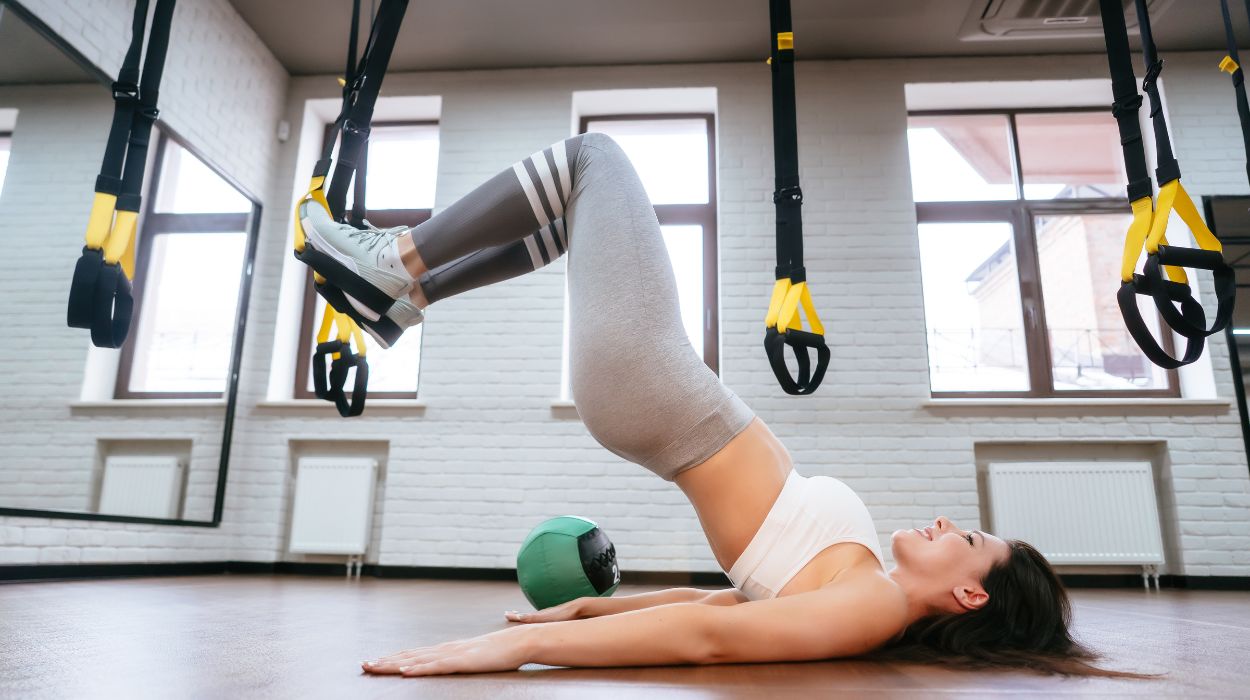
The human body is a marvel of intricate design and balance, each muscle keeping us mobile and healthy. One often overlooked area of fitness is the strengthening of the hip abductors – the muscles that facilitate the movement of the legs away from the center of the body. Not only can targeted exercises improve this part of your physique, but they also can enhance overall body stability, reduce injury risk, and even contribute to a trimmer waistline.
This article will guide you through various strategies for incorporating these beneficial movements into your fitness regimen. We will delve into the physiological benefits, discuss effective exercises, and provide tips to help you get the most out of your hip abduction workout.
So, let’s step back from the traditional fitness focus and spotlight these powerful yet often underappreciated muscles.
Best Hip Abductor Exercises
- Curtsy Lunge
- Clamshell
- Leg Side Circle
- Side-Lying Hip Abduction
- Fire Hydrant
- Standing Hip Abduction
- Hip Abduction Machine
Best Hip Abduction Exercises In 2024
Below are seven effective exercises, each offering unique benefits towards fortifying hip abductors, which, when combined with consistency, patience, and consideration of individual needs, leads to an effective and rewarding fitness journey.
Curtsy Lunge
Curtsy Lunges are a dynamic lower-body exercise that targets multiple muscle groups including the glutes, quadriceps, and adductors. In this movement, the legs cross behind the body in a motion reminiscent of a traditional curtsy, providing a unique challenge to the lower body muscles.
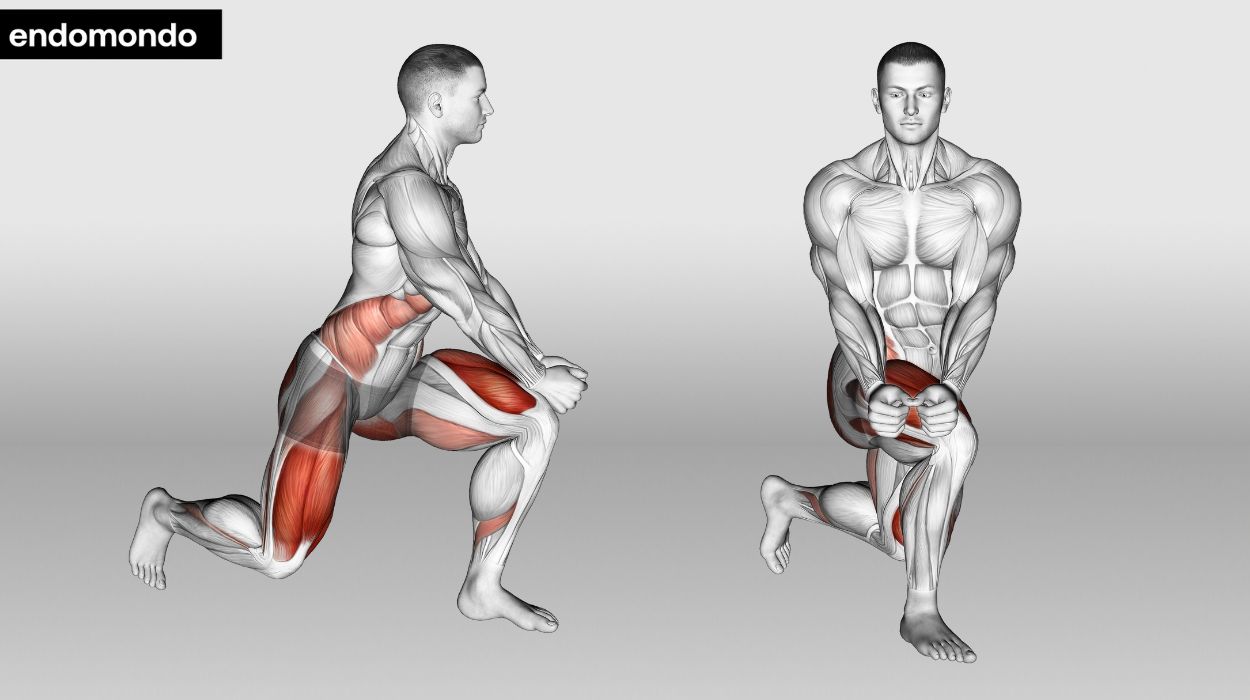
How to do:
- Start by standing tall with your feet hip-width apart and your hands on your knees.
- Step your right foot diagonally behind you, crossing it behind your left leg as if you were curtsying.
- Bend both knees to lower your body down towards the ground, keeping your chest lifted and your back straight.
- Press through your left heel to return to the starting position, then repeat the movement on the other side by stepping your left foot diagonally behind your right leg.
- Continue alternating sides for the desired number of repetitions, ensuring proper form and control throughout the exercise.
Tips:
- Keep your chest upright and shoulders back throughout the movement to maintain proper posture.
- Engage your core muscles to stabilize your body as you lower into the curtsy position.
- Ensure that your knees track in line with your toes to prevent any inward collapsing.
Optimal Sets and Reps: 3-4 sets of 10-12 reps per leg.
Clamshell
The Clamshells exercise is a simple yet effective movement that targets the muscles of the hip abductors, particularly the gluteus medius. By lying on one side and lifting the top knee while keeping the feet together, this exercise helps improve hip stability and prevent issues such as IT band syndrome.
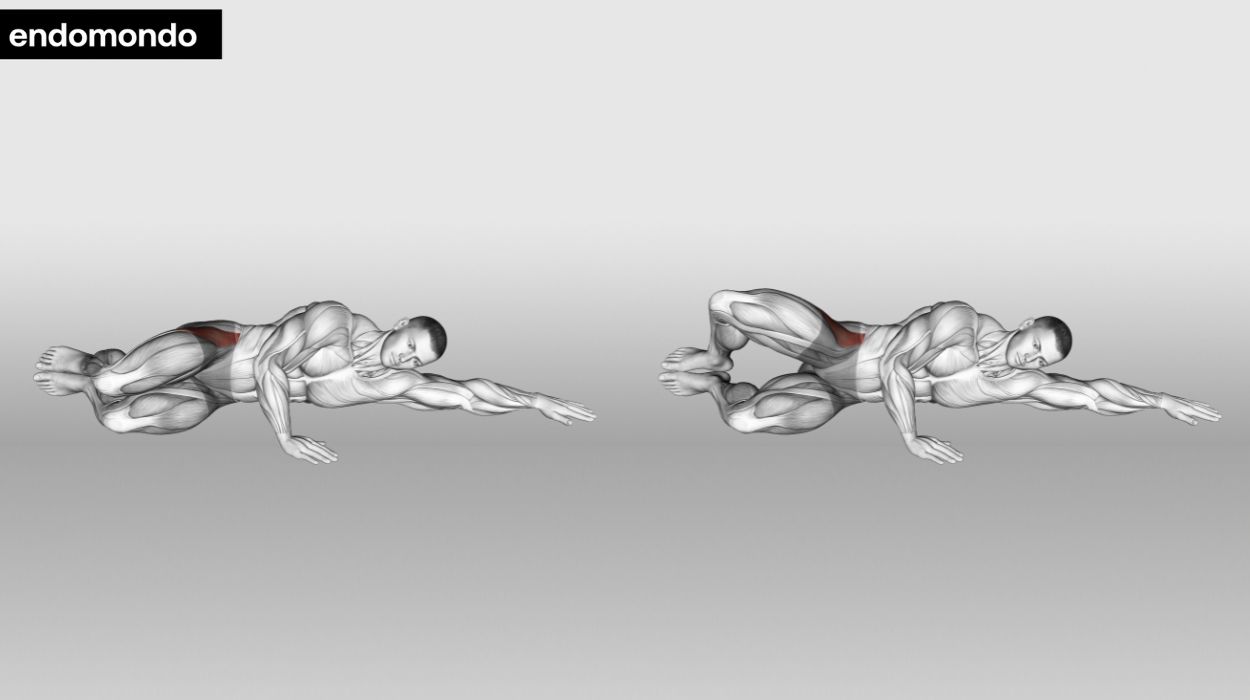
How to do:
- Lie on your side with your hips and knees bent, and your head supported by your bottom arm.
- Keep your feet together and lift your top knee upward as high as you can while keeping your feet in contact with each other.
- Hold the top position briefly, then lower your knee back down with control.
- Repeat for the desired number of repetitions, then switch sides and perform the exercise on the other leg.
Tips:
- Keep your core engaged throughout the movement to stabilize your spine and pelvis.
- Focus on lifting your top knee using the muscles on the side of your hips, rather than using momentum.
- Maintain a steady pace and avoid rocking your body back and forth during the exercise.
Optimal Sets and Reps: 2-3 sets of 12-15 reps per side.
Leg Side Circle
The Leg Side Circles exercise is a beneficial movement for improving hip mobility and strengthening the hip abductors. By lying on one side and drawing small circles with the top leg, this exercise targets the muscles responsible for outward leg movement, aiding in overall lower body stability.
This exercise can also be performed with a resistance band around your ankles for additional resistance.
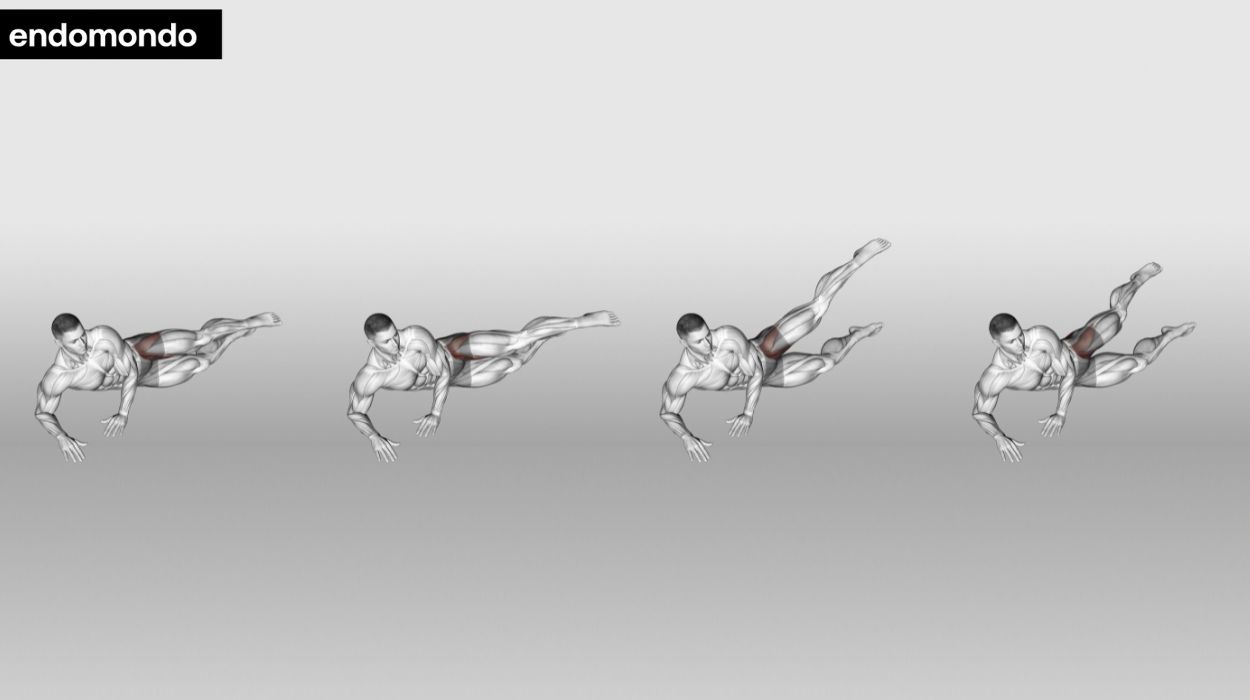
How to do:
- Lie on your side with your legs extended and stacked on top of each other.
- Lift your top leg slightly off the bottom leg and begin to draw small circles with your toes.
- Keep your core engaged and your hips stable throughout the movement.
- After completing circles in one direction, switch and perform circles in the opposite direction.
- Repeat for the desired number of repetitions, then switch sides and perform the exercise with the other leg.
Tips:
- Keep your core engaged and your hips stable throughout the movement to prevent rocking.
- Focus on maintaining control and drawing smooth circles with your toes.
- Avoid lifting your leg too high to prevent strain on the hip joint.
Optimal Sets and Reps: 2-3 sets of 10-15 reps per leg.
Side-Lying Hip Abduction
The Side-Lying Hip Abduction exercise is an effective way to target the hip abductor muscles, which are crucial for hip stability and proper lower-body mechanics. By lying on one side and lifting the top leg upward, this exercise helps strengthen the muscles responsible for moving the leg away from the body’s midline.
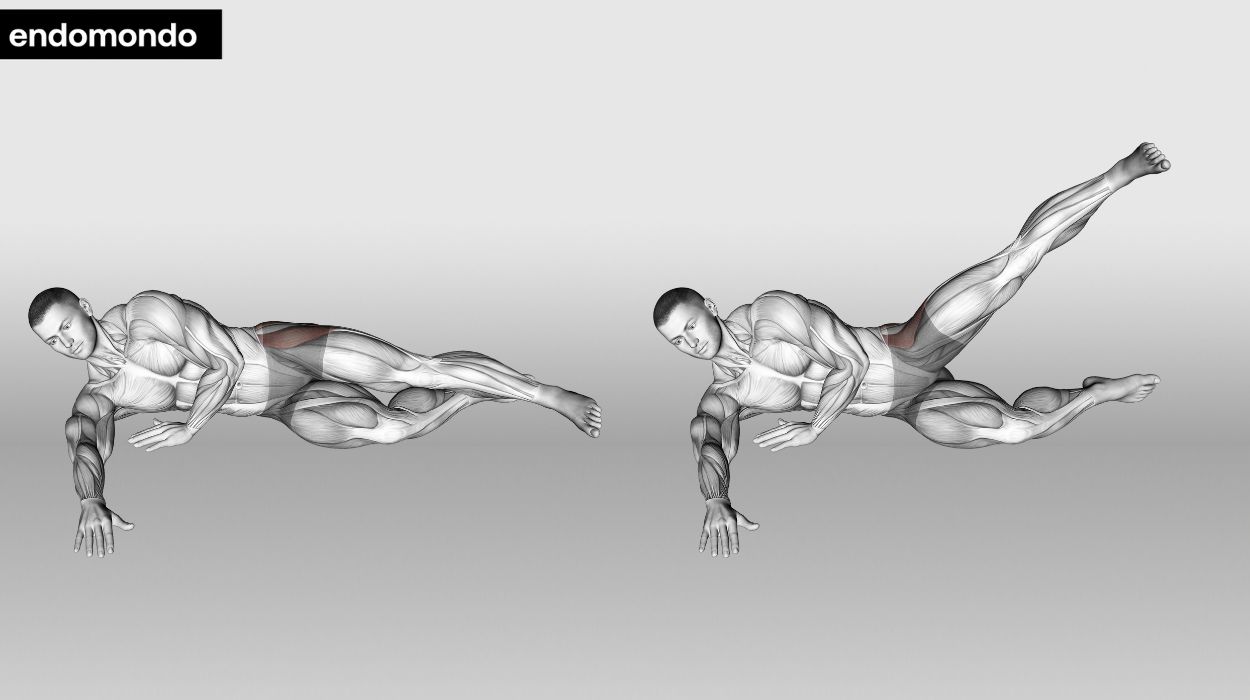
How to do:
- Lie on your side with your bottom leg straight and your top leg bent at the knee for stability.
- Keep your torso aligned and your hips stacked as you lift your top leg upward, away from your body.
- Pause briefly at the top of the movement, then lower your leg back down with control.
- Repeat for the desired number of repetitions, then switch sides and perform the exercise with the other leg.
Tips:
- Keep your core engaged throughout the movement to stabilize your body and prevent swaying.
- Focus on lifting your top leg using the muscles on the side of your hip, rather than relying on momentum.
- Maintain a slow and controlled pace, emphasizing the contraction of the hip abductors at the top of the movement.
Optimal Sets and Reps: 2-3 sets of 12-15 reps per leg.
Fire Hydrants
The Fire Hydrants exercise is a simple yet effective movement for targeting the glutes and hip abductors. By assuming a tabletop position and lifting one knee out to the side like a dog at a fire hydrant, this exercise helps improve hip mobility and stability.
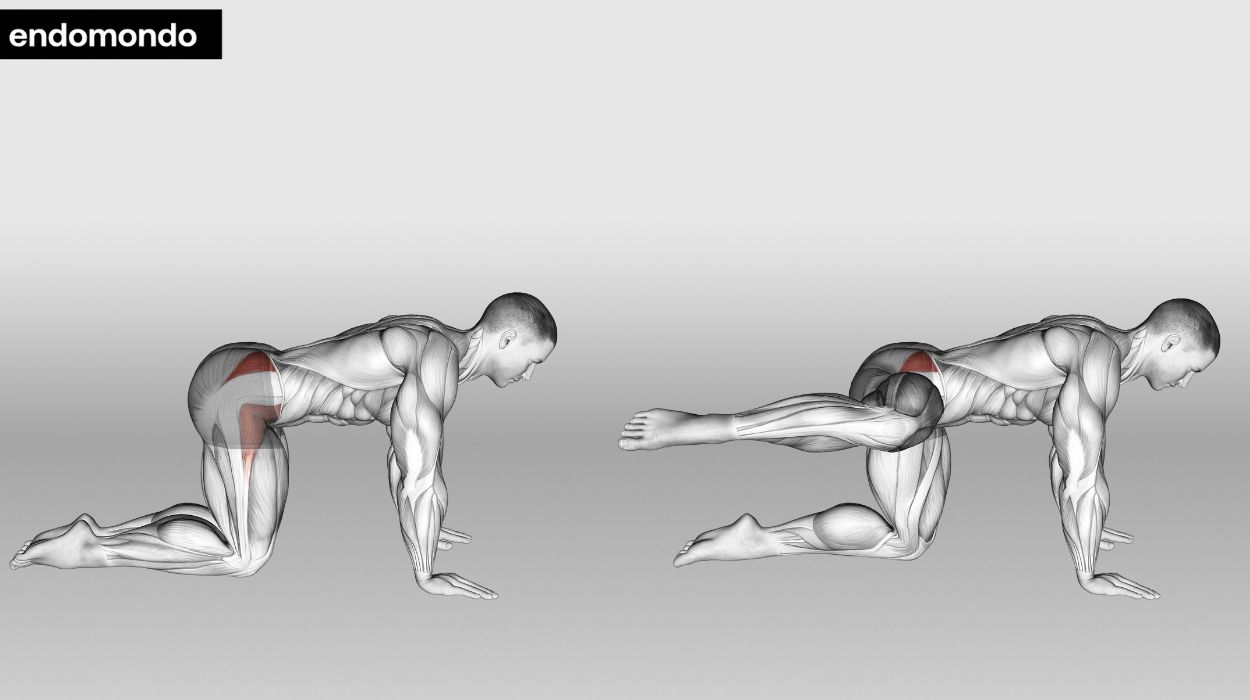
How to do:
- Begin on your hands and knees with your wrists directly under your shoulders and your knees under your hips.
- Engage your core and maintain a neutral spine as you lift one knee out to the side, keeping it bent at a 90-degree angle.
- Hold briefly at the top of the movement, then lower your knee back down to the starting position.
- Repeat with the opposite leg, alternating sides for the desired number of repetitions.
Tips:
- Keep your core engaged throughout the movement to stabilize your body.
- Lift your knee to the side using the muscles of your hips, not momentum.
- Maintain a slow and controlled pace, focusing on the contraction of your hip abductors.
Optimal Sets and Reps: 2-3 sets of 12-15 reps per leg.
Standing Hip Abduction
The Standing Hip Abduction exercise is a great way to target the hip abductor muscles while standing. By lifting one leg directly out to the side while maintaining stability on the supporting leg, this exercise improves hip strength and stability.
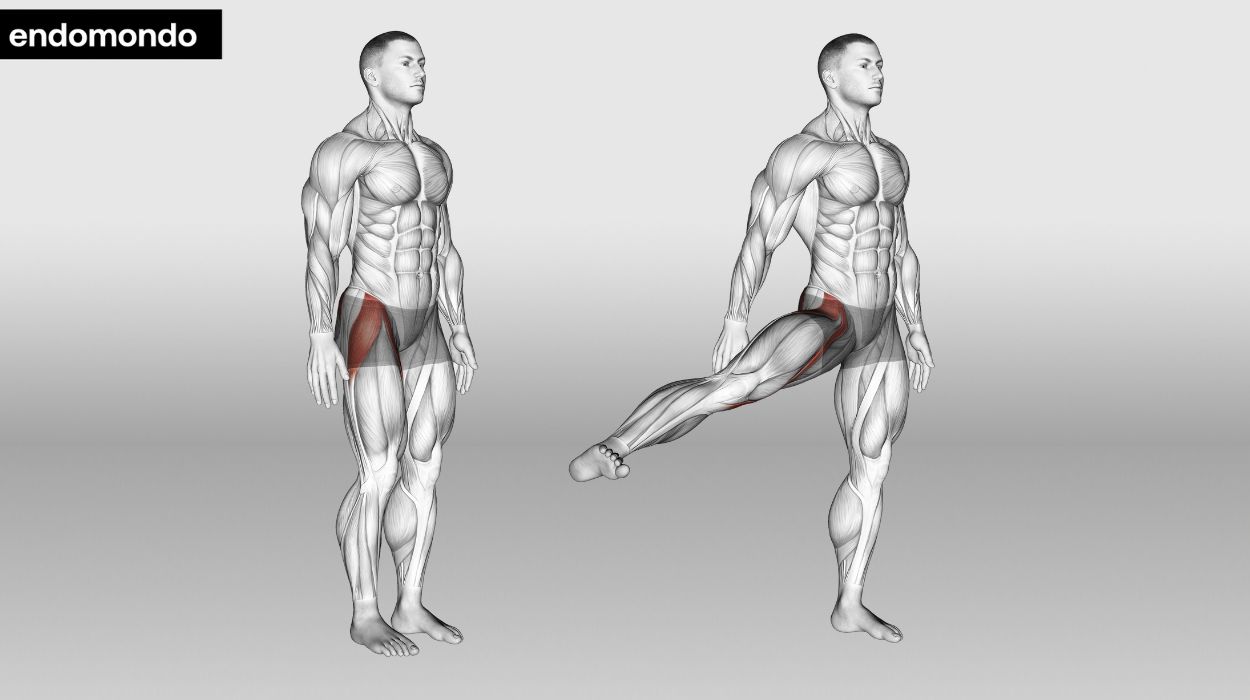
How to do:
- Begin by standing tall with your feet hip-width apart and your hands resting on a stable surface for support.
- Lift one leg out to the side, keeping it straight while maintaining a slight bend in the supporting leg.
- Hold the lifted leg in the abducted position for a brief pause, engaging your hip abductor muscles.
- Slowly lower the leg back down to the starting position with control.
- Repeat the movement for the desired number of repetitions on one side before switching to the other leg.
Tips:
- Maintain a stable stance and engage your core throughout the movement to prevent swaying.
- Focus on lifting your leg directly out to the side, using the muscles of your hip rather than leaning or tilting your body.
- Control the movement both on the way up and down to maximize muscle engagement.
Optimal Sets and Reps: 2-3 sets of 12-15 reps per leg.
Hip Abduction Machine
If you have access to a gym, a hip abduction machine can offer a more targeted exercise for your hip abductor muscles.
Please note that proper form is critical to prevent injuries and maximize the effectiveness of these exercises. Always consult a fitness professional if you’re unsure about executing these movements, especially if you have pre-existing knee pain or joint issues.
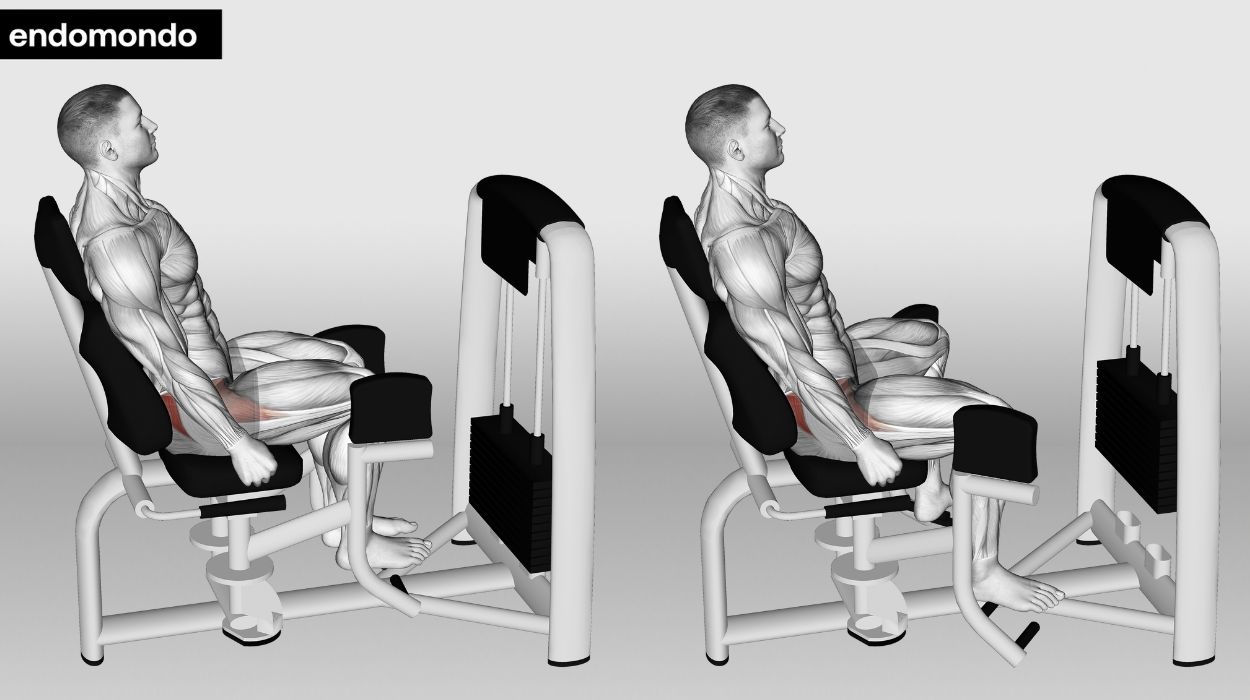
How to do:
- Sit on the machine with your back against the backrest and adjust the pads so they rest against the outside of your thighs.
- Hold onto the handles for stability and press your thighs outward against the pads, keeping your knees slightly bent.
- Hold the contraction for a moment, then slowly return to the starting position.
- Repeat for the desired number of repetitions, ensuring smooth and controlled movements throughout.
Tips:
- Adjust the machine settings so that your knees are comfortably aligned with the pivot point of the pads.
- Engage your core and maintain proper posture throughout the movement to avoid arching your back.
- Squeeze your glutes and focus on using the outer thigh muscles to press the pads outward.
Optimal Sets and Reps: 3 sets of 12-15 reps.
Benefits Of Doing Hip Abduction Exercises
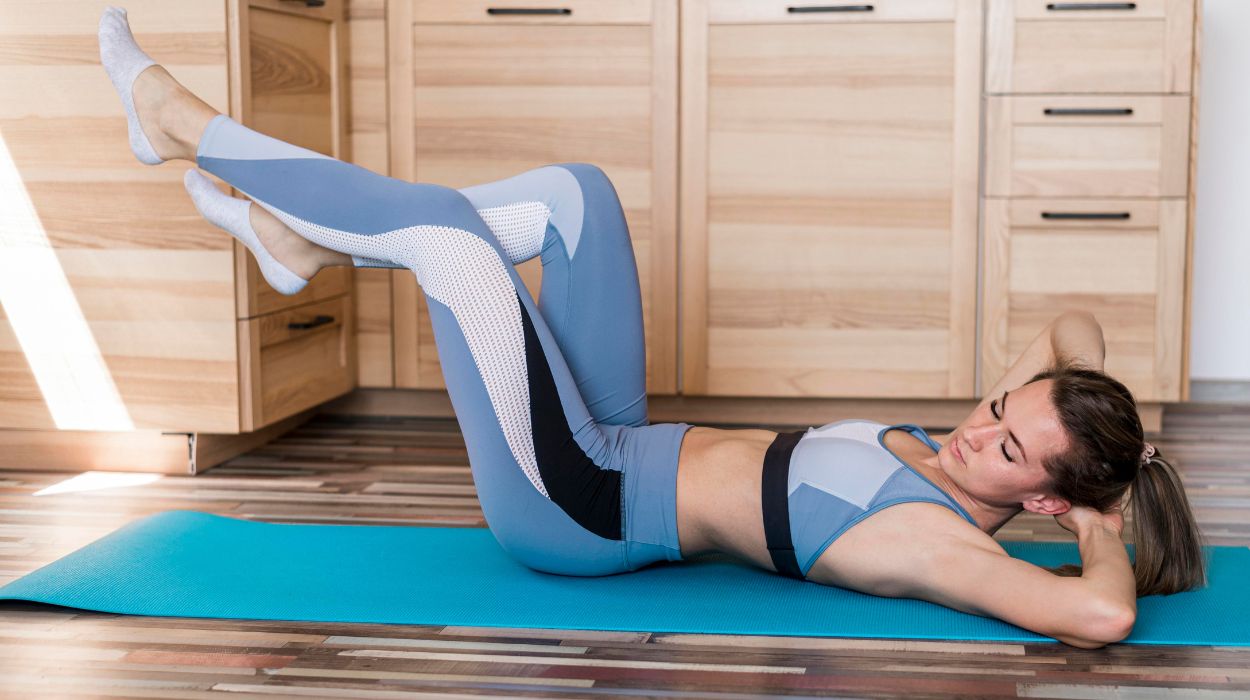
Embarking on a journey to improved physical well-being starts with understanding the impact of targeted exercises, so let’s dive right into the benefits of hip abduction exercises.
Improved Stability & Balance
The hip abductor muscles, mainly the gluteus medius and minimus, are essential for maintaining lateral stability and balance. By strengthening these muscles, individuals across various age groups can improve their stability and decrease fall risk.
Enhanced Athletic Performance
Strong hip abductors contribute to better performance in many athletic activities, especially those requiring lateral movement or quick changes in direction.
Soccer players who performed specific training that included hip abductor exercises showed greater[1] strength, faster sprint times, fewer injuries, and improved agility. These exercises’ enhanced power can significantly benefit athletes in various disciplines.
Lower Back Pain Reduction
Lower back pain is a widespread issue, and surprisingly, its root cause can often be traced to weak hip abductor muscles. These weaker muscles can place extra strain on the lower back by failing to provide sufficient stability.
A 2020 randomized control study shows a significant correlation between weak hip abductors[2] and lower back pain. Therefore, hip abduction exercises can play a critical role in alleviating and preventing this discomfort.
Prevention Of Knee Injuries
Hip abduction exercises can help prevent knee injuries by controlling the alignment of the leg. Weak hip abductors can cause the knee to collapse inward during movement, resulting in various injuries.
Increased Hip Mobility
Regular hip abduction exercises can increase the flexibility of the hip joint and prevent the stiffness that often comes with aging or a sedentary lifestyle. A study demonstrated that[3] adults who engaged in hip abduction exercises improved their hip mobility and overall physical functionality.
Improved Body Composition
While hip abduction exercises are not primarily used for weight loss, they can contribute to overall fat loss when incorporated into a balanced strength training routine. This benefit comes from increased muscle mass which boosts your basal metabolic rate (BMR), leading to more calories burned even at rest.
Other Tips For Doing Hip Abduction Exercises
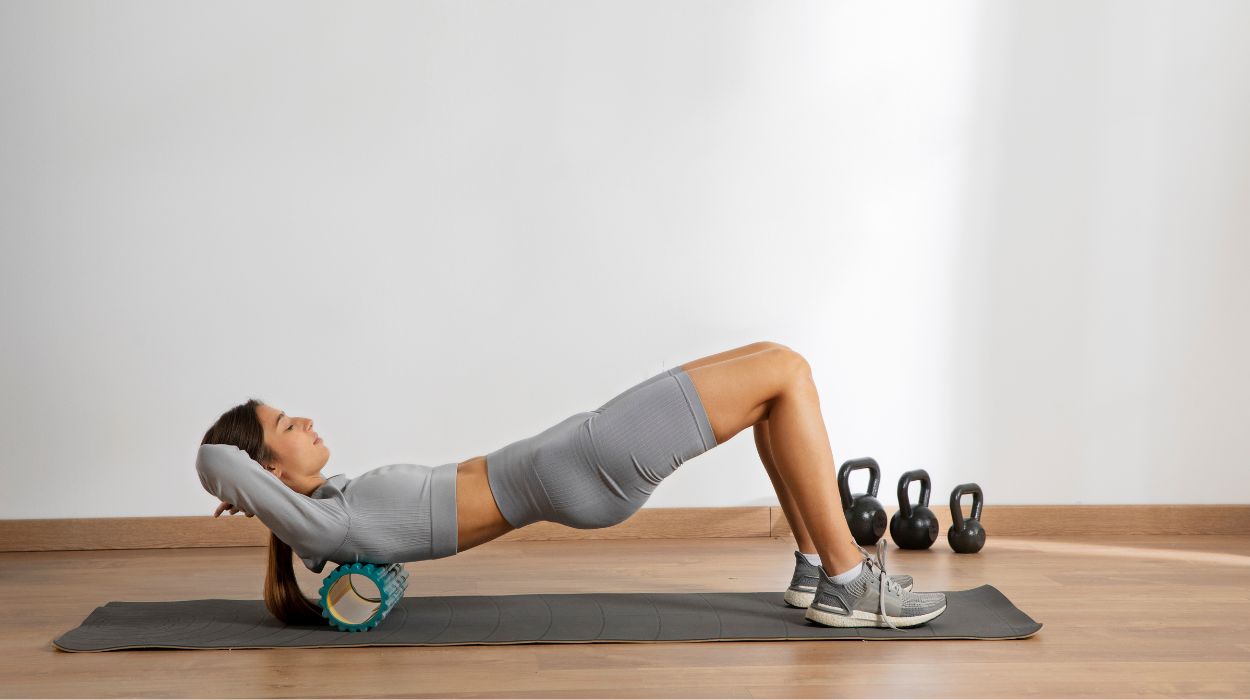
When engaging in a hip abductor workout, here are some tips to maximize your results and ensure healthy hip function:
Maintain Proper Form
Good form is crucial for all exercises, including those targeting the hip abductors. Keep your upper body supported and still, moving only the targeted muscles. For instance, when performing side-lying hip abduction, keep your top leg straight and your body aligned.
Breathe Consistently
Ensure you maintain steady, controlled breathing throughout your workout routine. A common method is to exhale during the hardest part of the movement (the exertion) and inhale during the easiest part (the release).
Warm-Up Before Starting
As with any exercise, a good warm-up is important to prepare your body for the workout. Warm muscles are less prone to injury and more efficient in their movements.
Avoid Leaning
It can be tempting to lean forward or sideways during these exercises but try to keep your body upright. Leaning can disengage the target muscles (such as the gluteus maximus and hip adductors) and place undue stress on your back and thigh bone.
Conclusion
The journey to strengthening your hip abductors, promoting balance, and enhancing mobility is a continuous process that requires dedication, correct form, and attention to detail. Each exercise plays a unique role in targeting specific muscles and offers a distinct contribution to your overall wellness.
Remember, consistency and patience are vital, as the benefits of these exercises unfold over time, not overnight. Also, remember that your journey should be tailored to your unique needs and capabilities. Stay motivated and consistent, and your efforts will certainly pay off.
Frequently Asked Questions
Regular hip abduction exercises can improve your hip strength, enhance balance and stability, boost athletic performance, reduce the risk of injuries, and support overall mobility.
By strengthening the hip muscles, these exercises can improve posture and alleviate some forms of lower back pain. Consult with a healthcare professional for personalized advice.
Like any exercise, results depend on consistency, intensity, and diet. Generally, you might notice improvements in strength and stability within a few weeks.
Many hip abduction exercises can be performed using just your body weight. Some, like clamshells, can be enhanced with a resistance band, but this is not mandatory.
While daily exercises are generally safe, your muscles need rest to rebuild and strengthen. A balanced routine with rest days is usually recommended.
Generally, yes. But always consult with a healthcare provider before starting any new exercise regimen during pregnancy, as individual needs can vary.
With guidance from a healthcare professional or physical therapist, these exercises can support hip injury rehabilitation by strengthening the muscles and improving mobility.
While they can help tone the hip and thigh areas, remember that total-body fitness and a balanced diet are essential for overall fat loss and a lean physique.
Resources
- Jensen, J., Per Hölmich, Bandholm, T., Zebis, M.K., Andersen, L.L. and Thorborg, K. (2012). Eccentric strengthening effect of hip-adductor training with elastic bands in soccer players: a randomised controlled trial. British Journal of Sports Medicine, [online] 48(4), pp.332–338. doi:https://doi.org/10.1136/bjsports-2012-091095.
- Kim, B. and Yim, J. (2020). Core Stability and Hip Exercises Improve Physical Function and Activity in Patients with Non-Specific Low Back Pain: A Randomized Controlled Trial. Tohoku Journal of Experimental Medicine, [online] 251(3), pp.193–206. doi:https://doi.org/10.1620/tjem.251.193.
- Lanza, M.B., Arbuco, B., Ryan, A.S., Shipper, A.G., Gray, V.L. and Addison, O. (2022). Systematic Review of the Importance of Hip Muscle Strength, Activation, and Structure in Balance and Mobility Tasks. Archives of Physical Medicine and Rehabilitation, [online] 103(8), pp.1651–1662. doi:https://doi.org/10.1016/j.apmr.2021.12.008.




